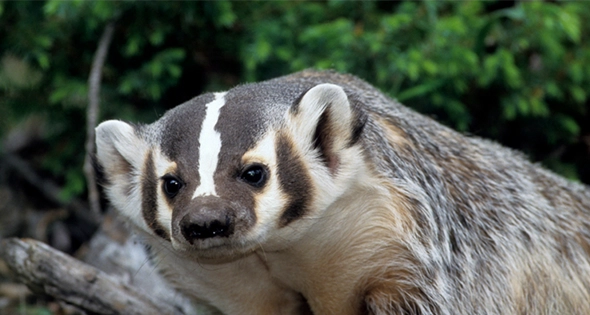When it comes to wildlife conservation, fieldwork is crucial, but community involvement can be just as impactful. The Simpcw Badger Study, which aims to protect and understand the endangered American badger population in Simpcw Territory, exemplifies how collaboration between scientists and local communities can significantly advance conservation efforts.
American badgers, though elusive, have a profound connection to the local ecosystem. They are predators of small mammals, playing a role in controlling populations of species such as ground squirrels and marmots. However, badger populations have been declining due to threats like vehicle collisions, habitat fragmentation, and climate change. The Simpcw Badger Study is working to reverse this decline through a combination of scientific research and community engagement. Here’s how the community is making a difference and how even more involvement can help safeguard these unique animals.
How the Community is Involved
Reporting Sightings and Burrows
One of the most direct ways the community can contribute to the Simpcw Badger Study is by reporting sightings of badgers or their burrows. Badgers are elusive creatures, and spotting them is often a matter of chance. Residents who encounter a badger or notice a burrow can provide invaluable information to researchers. These reports allow the study team to respond quickly to potential badger habitats, enabling them to prioritize field visits and set up monitoring equipment in locations that are most likely to yield data.
Every reported sighting contributes to a clearer understanding of where badgers are active and helps researchers refine their population maps. This local knowledge provides a foundation for the study’s success, as researchers would otherwise struggle to cover such vast and varied terrain on their own.
Habitat Monitoring
Beyond simply reporting badger sightings, community members can also participate in habitat monitoring efforts. By keeping an eye on known badger habitats and reporting any changes, such as signs of recent digging or shifts in vegetation, locals play an active role in tracking badger activity over time. This kind of consistent monitoring is essential for understanding how badgers use their environment and how their habitats may be changing due to external pressures like climate change or human development.
Expanding Community Involvement
While the current level of community participation has been instrumental in the study’s success, there are several ways in which involvement could be expanded to further strengthen conservation efforts.
Citizen Science Programs
One promising approach to increasing community involvement is the development of citizen science programs. These programs would offer training to interested community members on how to identify badger habitats, record sightings, and even help set up and monitor camera traps. By empowering citizens with the tools and knowledge they need to contribute directly to the research, the study could gather far more data than would be possible through traditional fieldwork alone.
Citizen scientists could also assist in habitat assessments, helping to document the types of environments badgers prefer and identifying potential threats. With more eyes on the ground, researchers can gain a much more comprehensive understanding of the badger population and its needs.
Educational Workshops and Outreach
Educating the community about the importance of badger conservation is another key avenue for increasing involvement. Hosting workshops, school programs, and outreach events can help raise awareness about the threats facing badgers and the role local residents can play in protecting them.
These educational initiatives could include hands-on activities, such as guided field trips to badger habitats or demonstrations of how to identify badger burrows. By engaging people of all ages, these programs can foster a deeper connection between the community and the local wildlife, inspiring long-term stewardship of the land and its inhabitants.
Partnerships with Local Organizations
Collaborating with local organizations, such as schools, environmental groups, and businesses, can also enhance community involvement. For example, schools could integrate badger conservation into their science curricula, allowing students to participate in the study as part of their education. Local businesses could support conservation efforts through sponsorships or by hosting educational events.
Partnerships with environmental groups could lead to joint conservation projects, combining resources and expertise to address broader ecological challenges in the region. By building a network of local stakeholders, the Simpcw Badger Study can ensure that conservation efforts are sustained and that the community remains engaged for the long term.
The Importance of Community Involvement in Conservation
The involvement of the Simpcw community in the badger study is a powerful example of how local knowledge and participation can enhance conservation efforts. By working together, researchers and residents are building a stronger, more resilient approach to protecting the American badger population in Simpcw Territory.
As the study continues, expanding community involvement will be crucial to its success. By fostering a deeper connection between the people of Simpcw and the wildlife that shares their land, the study not only aims to protect an endangered species but also strengthens the bonds that tie the community to its natural environment.
Through citizen science, education, and collaboration, the Simpcw Badger Study is creating a model for how conservation can be a shared effort, uniting science and community for the benefit of all. Together, we can ensure that future generations will continue to witness the presence of the Sq̓ítxleqs, the American badger, thriving in Simpcw Territory.

